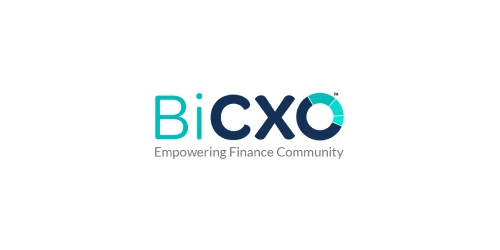Choosing the right EPM software is crucial for businesses looking to streamline their financial planning, forecasting, and overall performance management. With multiple options available, finding the best one can be challenging. This article compares top EPM software solutions, including BiCXO, Anaplan, OneStream, Board, Tagetik, and Jedox, to help businesses make an informed choice.
BiCXO
BiCXO stands out as a powerful EPM software that simplifies performance management with real-time analytics and an intuitive interface. It seamlessly handles large datasets and provides unrestricted features, making it ideal for businesses of all sizes. While relatively new in the market, its ability to offer comprehensive financial and operational planning makes it a strong competitor.
Pros:
✅ Real-time analytics for quick decision-making
✅ Easy-to-use interface with no feature restrictions
✅ Efficient handling of large datasets
✅ Comprehensive financial and operational planning
Cons:
❌ Fewer third-party integrations due to its newness
Anaplan
Anaplan is a flexible and scalable EPM software designed for demand forecasting and supply chain planning. It offers powerful data modeling but has a complex setup and a long learning curve.
Pros:
✅ Excellent for supply chain and demand forecasting
✅ Highly scalable for enterprise-level needs
✅ Dynamic planning across business functions
Cons:
❌ Complex implementation and long learning time
OneStream
OneStream is tailored for financial consolidation and advanced reporting, making it ideal for large enterprises. It provides strong compliance features but comes with a high cost and a steep learning curve.
Pros:
✅ Powerful financial planning and reporting
✅ In-depth analytics and data management
✅ Strong compliance and audit features
Cons:
❌ Expensive and requires significant training
Board International
Board is a versatile EPM software that focuses on scenario-based planning and decision-making. It offers strong visualization tools but has limited features that may require developer assistance for customization.
Pros:
✅ Scenario-based planning for forecasting
✅ User-friendly drag-and-drop interface
✅ Great for budgeting, reporting, and analysis
Cons:
❌ Limited features and requires developer support
Tagetik
Tagetik excels in financial planning, consolidation, and regulatory compliance. While it integrates well with ERP and BI tools, it may not be adaptable for varied data sets and comes at a high cost.
Pros:
✅ Robust financial forecasting and consolidation
✅ Strong compliance and regulatory support
✅ Seamless integration with business intelligence tools
Cons:
❌ High cost and limited adaptability for diverse datasets
Jedox
Jedox is an easy-to-use cloud-based EPM software with strong financial forecasting and analytics capabilities. However, it struggles with complex data integrations, which may limit its effectiveness for businesses with varied data sources.
Pros:
✅ Intuitive and user-friendly interface
✅ Customizable financial models
✅ Cloud-based for accessibility
Cons:
❌ Struggles with complex data integrations
Each EPM software has unique strengths and weaknesses. While Anaplan is great for supply chain planning, OneStream and Tagetik focus on financial consolidation. Board and Jedox offer scenario-based forecasting and ease of use. However, BiCXO emerges as the best option for businesses seeking a feature-rich, user-friendly solution with real-time analytics.
To read the full article, click on the link here.


![Best enterprise performance management software (EPM Software): A comparison [updated 2025]](https://images.writeupcafe.com/OCObnfURXB_RB7vn6_j4xNdj5MirwBP2qkxWNDD5548/resize:fill:800:/aHR0cHM6Ly93cml0ZXVwY2FmZS5jb20vZGF0YS9wb3N0LzE0OTI4MzcvOTkwNjUwOWJjNThhZmM1ZjJkOGI1ODljMjJmNGUwNTgucG5nLndlYnA)